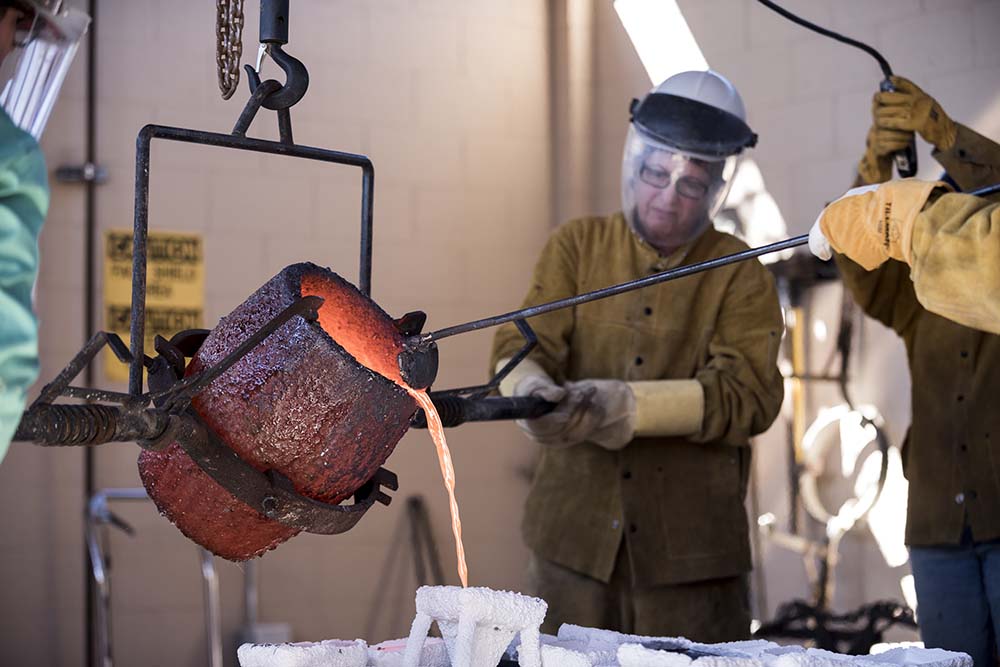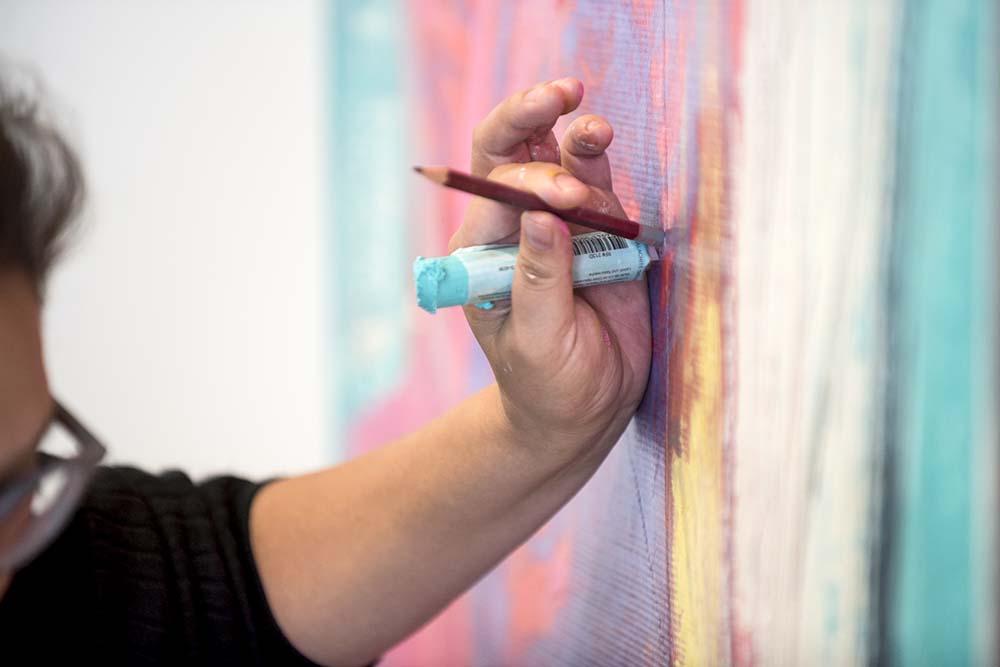
- Details
- By The Institute of American Indian Arts
The Institute of American Indian Arts (formally known as the Institute of American Indian and Alaska Native Culture and Arts Development) is one of 37 tribal colleges located in the United States. IAIA is accredited by the Higher Learning Commission (HLC), and is a member of the American Indian Higher Education Consortium.
IAIA was established in 1962 during the administration of President John F. Kennedy and opened on the campus of the Indian School in Santa Fe, New Mexico. It was first a high school formed under the Department of Interior’s Bureau of Indian Affairs. Under the leadership of Dr. George Boyce, Lloyd Kiva New (Cherokee), and others, the Institute embodied a bold and innovative approach to arts education. In 1975, IAIA became a two-year college offering associate degrees in Studio Arts, Creative Writing, and Museum Studies – with a mission “To empower creativity and leadership in Native Arts and cultures through higher education, life-long learning, and outreach.”
IAIA became one of three Congressionally chartered colleges in the United States in 1986, and was charged with the study, preservation, and dissemination of traditional and contemporary expressions of Native American language, literature, history, oral traditions, and the visual and performing arts.
In 1992, IAIA relocated its Museum of Contemporary Native Arts to downtown Santa Fe. As the nation’s leading exhibition facility for contemporary art by Indigenous artists, the Museum also curates the National Collection of Contemporary Native American Art.

In August 2000, IAIA moved its college to a permanent 140-acre campus. The Institute expanded its academic programs to include baccalaureate degrees, introducing a BFA in Creative Writing, Studio Arts, and New Media Arts, as well as a BA in Museum Studies and Indigenous Liberal Studies (in 2006). The new campus made room for several state of the art buildings such as the library, an academic and administrative center, a residence center and family housing, a student life center, and a cultural learning center.
In the fall of 2010, IAIA added over 60,000 square feet of building space to its campus with the Center for Lifelong Education Conference Center, the Barbara and Robert Ells Science and Technology Building, and the Allan Houser Haozous Sculpture and Foundry Building. The Center for Lifelong Education Conference Center houses the campus café, space for conferences and meeting, the student life offices, and the campus bookstore. The Barbara and Robert Ells Science and Technology Building features a digital dome theater, additional new media labs, conservation/science labs, and faculty offices. It also houses the world-class Museum of Contemporary Native Arts’ permanent collection. The Allan Houser Haozous Sculpture and Foundry Building features studio space for wood/stone carving, a glass, as well as metal sculpting and casting capabilities.
In 2013, IAIA entered a new era when it began offering its first graduate program, a low-residency MFA in Creative Writing. In 2020, IAIA launched its second graduate program, a low-residency MFA in Studio Arts.

IAIA is a national institute of excellence and an example of all that can be accomplished in furthering, supporting, and nurturing contemporary Native arts through exhibitions, research, indigenous exchange, and other educational programs which build and sustain the school’s core values.
The Institute of American Indian Arts offers academic excellence to both Native and non-Native populations. The goal is empowerment through education, economic self-sufficiency, and expression and enhancement of artistic and cultural traditions.
Many of the country’s most illustrious contemporary American Indian artists, poets, writers, musicians, and cultural leaders are IAIA alumni -- while others are affiliated with IAIA as faculty, staff, visiting artists, and scholars. Among these are Lloyd Kiva New (Cherokee), Dan Namingha (Hopi-Tewa), Fritz Scholder (Luiseño), David Bradley (Minnesota Chippewa), Doug Hyde (Nez Perce/Assiniboine/Chippewa), Allan Houser (Chiricahua Apache), Charles Loloma (Hopi), Otellie Loloma (Hopi), Earl Biss (Absaroke Crow), T.C. Cannon (Kiowa/Caddo), Sheldon Peters Wolfchild (Sioux), Darren Vigil Gray (Jicarilla Apache/Kiowa), Sherwin Bitsui (Diné), Rose Simpson (Santa Clara Pueblo), Patty Harjo (Seneca/Seminole), Bill Prokopiof (Aleut), Kevin Red Star (Crow), Joy Harjo (Mvskoke), Irvin Morris (Navajo Nation), Charlene Teters (Spokane), and many more!
The Institute of American Indian Arts sits on the homelands of the Pueblo Nations.
